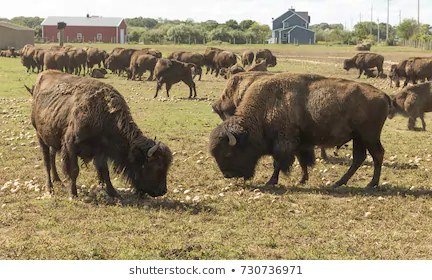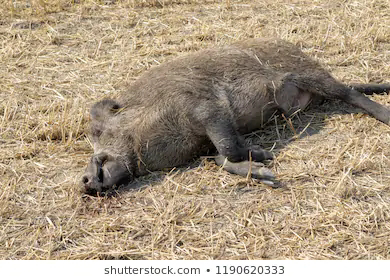When we think of farm animals, we often think of meek and docile animals that would never run after you and try to maim you. Those kind of things are done by wild animals. They are totally different, aren’t they? Yes, there is a big difference between farm animals and wild animals. However, a farm animal can be a wild animal. You don’t understand? What I mean is that you can have a non-domesticated or partly domesticated animal that is being reared on your farm.
Advertisements
The animals you see on the farm today were once wild animals. The chicken for example has a long history with the jungle. Its ancestor, the junglefowl was wild but years of being in contact with humans have made the chicken less scared of humans and less likely to run away at the sight of us. The animals in this article are wild yet they still find a place on some farms.
What are they reared for?
Farm animals are reared for three main reasons and the reasons are not so different for these animals either. These animals are reared:
1. For their meat,
2. For their skin, fur and hides,
3. For their milk.
Now that we have gone through the boring introduction and have also talked about the reasons why these animals are reared, we can now go into our list. The following are wild animals that you won’t believe are farm animals:
1. Crocodiles

Crocodiles are big reptilian killing machine. Their bite force is rated as one of the highest of any creature on the planet. Their method of killing is vicious and cold blooded, just like the class of creatures they belong to. They bite down on their prey with such a bite force that can crush bones and then roll their body in the famous “death roll”.
With all the above, most people would find it strange that anyone would house a crocodile let alone rear it. If you found that weird, then you would be shocked to know that crocodile farming is one of the most lucrative types of farming in recent time.
Asia and Africa are two continents where crocodile farming enjoys fair popularity and ever increasing demand.
What do farmers gain from rearing crocodiles
Although the risk of getting maimed is high, crocodile farming is actually lucrative. Crocodiles are reared for their skin. Crocodile farming is a major contributor to the global luxury market for designer handbags, belts, shoes and accessories made of leather.
2. Alligators
Like crocodiles, alligators are also reared. Alligators are no less dangerous than crocodiles and rearing them is just as risky. There are a lot of similarities between crocodile farming and alligator farming. For this reason, I won’t speak much about it.
The alligator farming industry is not as popular as the crocodile farming industry but it is just as lucrative. According to Wikipedia, in Louisiana alone, alligator farming is a $60 to $70 million industry. Imagine how much that would be in the world of America.
Alligators, like crocodiles are reared for their skin and their meat.
3. American Bison
The American bison is a close relative to the cattle, yaks and Buffalos of Africa. Before the 19th century, American bison grazed the plains of the continent in large numbers but their numbers became to dangerously plummet.
The farming of the American bison looks not just as a business started with the intention of making profit but also as a conservation method to keep bisons from extinction.
The business, although lucrative, is not very popular. The industry is not as populated as the other two animals mentioned so far in this list.
Bisons are not so easy to control. They are wild, that is one thing you should note. They require large spaces and it is advised by top farmers to interfere in their daily life as little as possible.
Bisons are reared for their lean, low calorie yet high protein meat. The bison farming industry is basically a meat oriented industry.
4. Wild boar
Pigs and wild boar are not so morphologically different. However, wild boars are difficult to handle. They are defensive and can easily jump over a waist high fence.
Wild boars can be feed with the same type of commercially produced food that domesticated pigs feed on. They breed well too, usually having one litter per year. Each litters can be make up of more than 3 youngs.
So what are the perks of rearing these wild boars?
Wild boars produce leaner and higher protein meat than pigs.
Thanks for reading.
Please share this article and subscribe to our newsletter.













